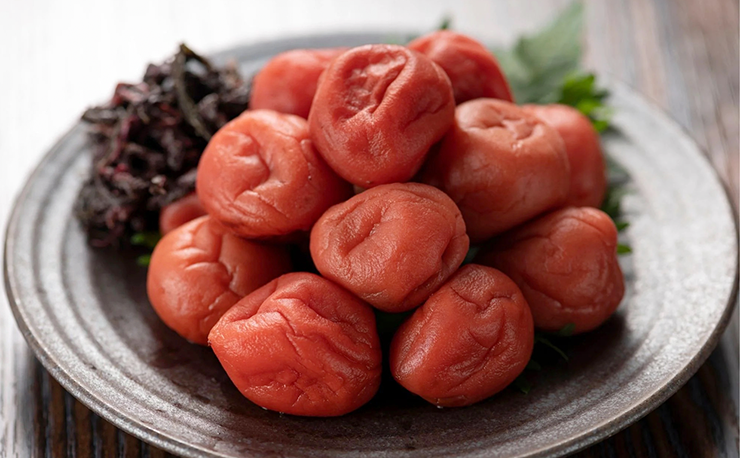
Umeboshi, a staple of Japanese cuisine, are pickled plums known for their strikingly sour and salty flavor. These preserved fruits are made by pickling ume, a type of Japanese apricot, with salt and red shiso leaves. The red shiso not only enhances the preservation process but also gives the plums their vibrant reddish hue. The origin of umeboshi dates back over a thousand years, when they were used as a natural preservative and medicine. Rich in citric acid and antioxidants, they were believed to prevent fatigue, aid digestion, and combat foodborne illnesses. Samurai often carried umeboshi as a portable remedy and energy booster during battles.
In modern Japanese cuisine, umeboshi are often enjoyed with steamed rice, either served on the side or as a filling for onigiri (rice balls). They are also a key ingredient in ochazuke, a simple dish of rice topped with hot tea. The intensely sour flavor makes them a popular condiment in sauces, dressings, and marinades, where just a small amount can add depth and tanginess. Umeboshi can also be paired with vegetables, tofu, or even incorporated into Western-style dishes like salads and sandwiches for a unique twist.
Despite their salty taste, umeboshi are low in calories and packed with beneficial nutrients, making them a popular choice in health-conscious diets. Their long shelf life, rich flavor, and versatile uses in cooking have solidified umeboshi as a beloved symbol of Japanese culinary tradition and well-being.
The post Umeboshi appeared first on The Fashiongton Post.
